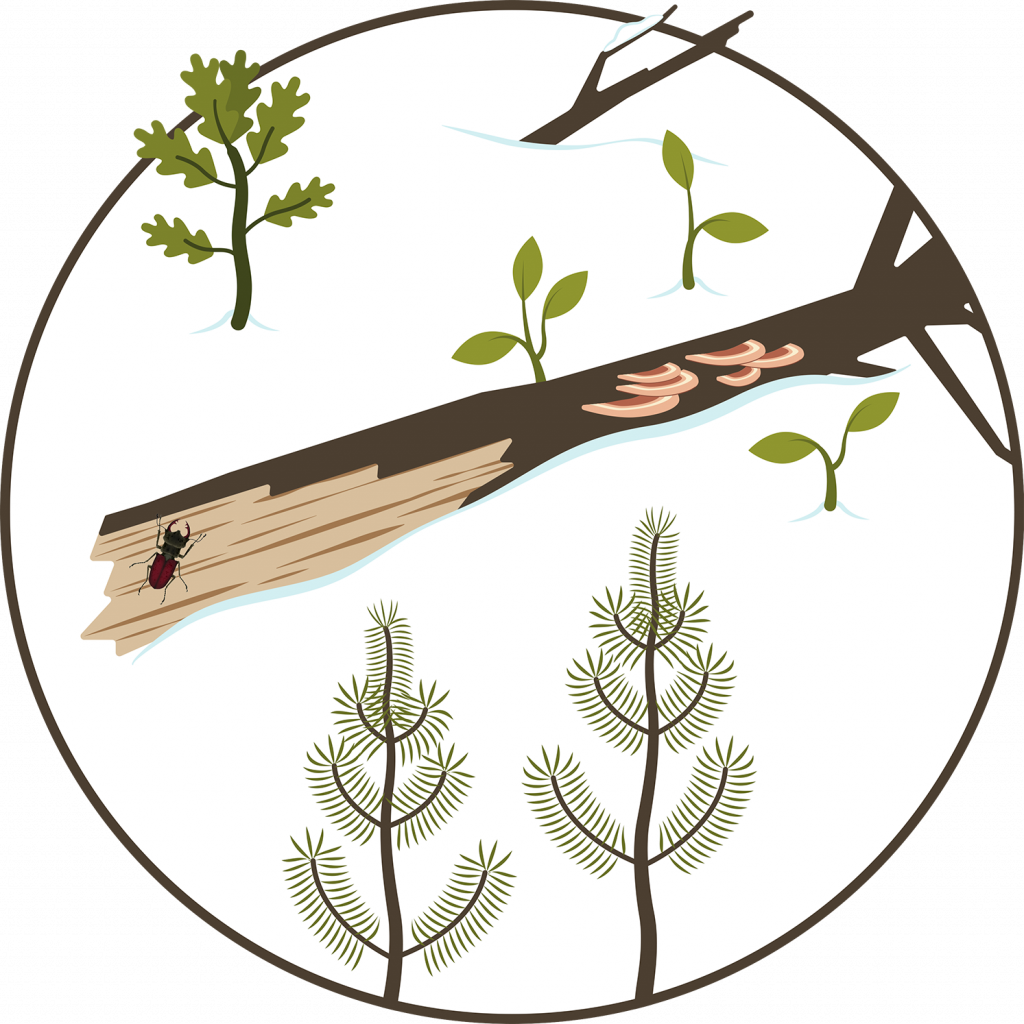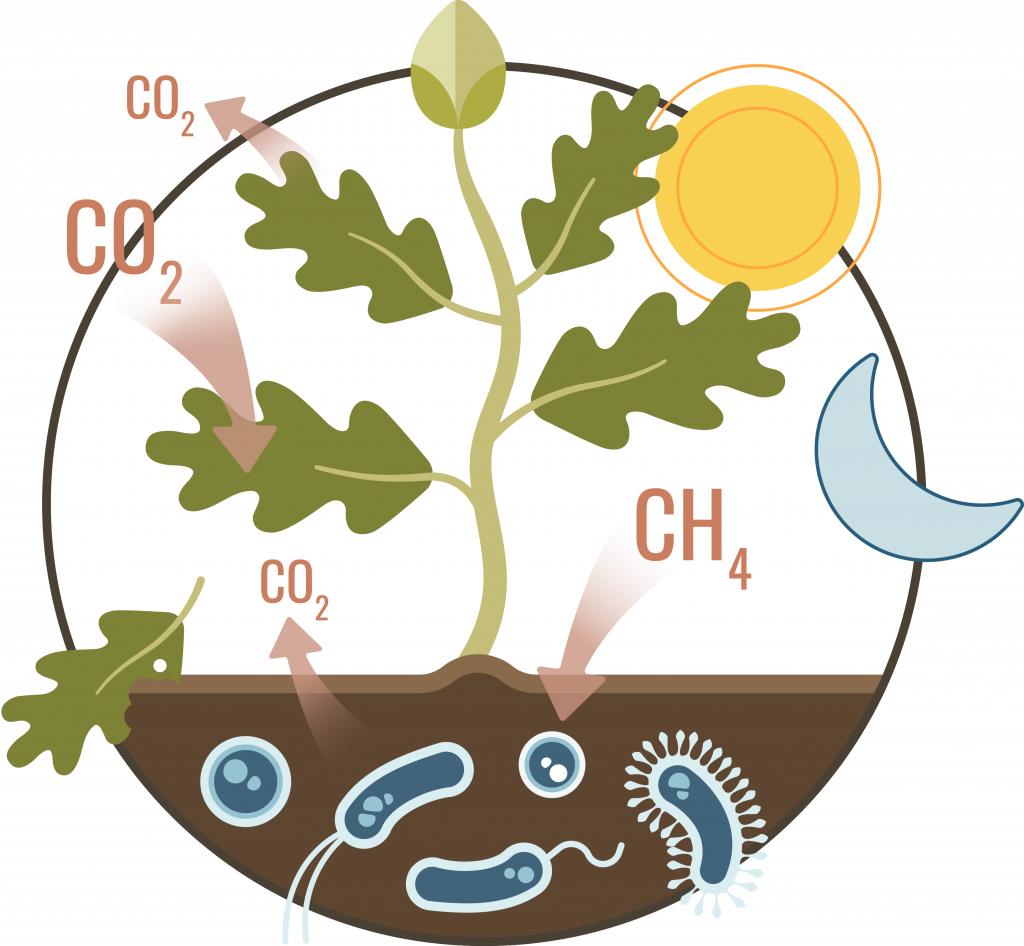1:3 Regeneration After Fire
1:3 Regeneration After Fire

What do we do in the Regeneration After Fire team?
We study the factors that play a role in the regeneration of ecosystems after fire, so that the required measures may be taken.
Several actions, such as the removal of burnt wood and reforestations, are usually taken after a fire. We want to find out when such actions may contribute to the regeneration of biodiversity and the functioning of ecosystems, and when they may be harmful.
We study several processes, including the decomposition of dead wood and its corresponding release of nutrients.
Besides, using remote sensing, we analyse how the removal of logs and branches may be related to a key process in the water cycle: the loss of snow.

What did we find out?
Take a look at the advantages and disadvantages of the removal of dead wood after fire.
What did we find out?
Take a look at the advantages and disadvantages of the removal of dead wood after fire.
Descubre como la salud de los ríos empeora debido a la actividad humana.
Desde su nacimiento en la cabecera de los valles glaciares de Sierra Nevada, el estado de los ríos empeora debido a la actividad humana.
Rotate
How does it benefit us?
Understanding the impact produced by the removal of dead wood is key to act better after a fire.
Our results help us make better decisions about the actions that should be taken after a fire.
Whereas removing the wood and selling it provides financial benefits, other effects should also be considered, such as those caused on soil fertility, snow cover or water availability.

Data generated by the team
Learn more about the data we are generating- After fire regeneration monitoring: wood decomposition and soil nutrient content.
2:3 Forest Pests
What do we do in the
Forest Pests team?
We study the processionary caterpillar pest to understand its behaviour and that of other similar pests.
We study the population dynamics of the pine processionary caterpillar (Thaumetopoea pityocampa), and the reasons why it may produce intense defoliations under specific environmental circumstances. Whereas we use this organism as a model, we extrapolate our results to other species of exfoliating lepidoptera in the Mediterranean forest, in order to fight against several pests.
Processionary caterpillar life cycle
Discover the phases it goes through during the year.
Processionary caterpillar life cycle
Descubre como la salud de los ríos empeora debido a la actividad humana.
Desde su nacimiento en la cabecera de los valles glaciares de Sierra Nevada, el estado de los ríos empeora debido a la actividad humana.
Rotate
What did we find out?
The increase in the damages caused by the pest may be explained by the combination of three factors.
- Their biological cycle is adapted to specific environmental conditions.
- Due to global warming, temperatures have increased.
- Their habitat has changed as a consequence of human activity, which gives rise to dense,
closed, and monospecific pine plantations.
How does it benefit us?
Understanding which factors cause the problem, and which factors can be acted upon, is crucial to find solutions.
Our research sheds light on the problem of population control in natural settings. We analyse the contribution of several factors, such as the climate, food availability, competitors, predators, and parasites, or a combination of all of them.
The definitive solution, for the time being, involves shifting current models of pine plantations towards extensive cultivation models with more diversity of species. By doing so, we will avoid pests and fires and obtain new opportunities related to the obtention of food and resin, livestock farming and ecotourism, and biodiversity recovery.

Data generated by the team
Learn more about the data we are generating- Monitoring of pine processionary moth and interactions with other organisms.
3:3 Exchange Of Gases

What do we do in the Exchange Of Gases team?
We analyse whether the way forests are managed has an impact on the way they function.
One of the ecosystem services that forests provide through photosynthesis is the removal of CO2 from the atmosphere. However, in the process of respiration they release CO2 into the atmosphere. The balance between these two processes defines the capacity of the forest to sequester carbon. Besides, Mediterranean ecosystems are also potential sinks of the second most important greenhouse gas, methane (CH4).
The flows of CO2 and CH4 may shift depending on how forests are managed. Ground clearing and thinning are common practice in Mediterranean forests, and the wood and main branches that were cut down are left in place. Patches of bare soil arise as a consequence of these activities, and the CO2 and CH4 exchanges in the soil are affected. Besides, climate change makes the situation worse by preventing the proper functioning of the carbon cycle.
Against this background, our goal is to determine whether the way human beings manage natural and reforested forests disrupts the ecosystem. To achieve this goal, we need to analyse the flows of CO2 and CH4 in the soils of Mediterranean forests.
CO2 and CH4 flow in forests

What did we find out?
In order to improve forest management, we need to study the flow of several compounds.
Our studies show that, in Sierra Nevada, the oak groves with vegetation under the trees release more CO2 than those where the soil is bare due to forest management. However, the presence of undergrowth helps capture more methane, which shows that, aside from CO2, other greenhouse gases should also be considered to determine what the best management would be. After all, the methane sink could be capable of counteracting the release of CO2.
What are the benefits of this study?
We determine which actions help fight against climate change.
Our research will give us tools to determine what the best management decisions are regarding the carbon cycle, and we will be able to apply climate change adaptation and mitigation strategies.
Besides, we will have tools to quantify how much carbon is stored in forest ecosystems, and how it will be affected by global change.

Data generated by the team
Learn more about the data we are generating- Monitoring soil ventilation processes.
- Monitoring carbon fluxes (CO2, CH4) in forest microhabitats (bare/forest soil of oak and holm oak groves and pine reforestation plots, under different forest management treatments).





